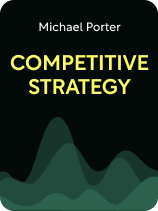

This article is an excerpt from the Shortform book guide to "Competitive Strategy" by Michael Porter. Shortform has the world's best summaries and analyses of books you should be reading.
Like this article? Sign up for a free trial here.
Do you want your business to stand out from the rest? How can you practice differentiation in business?
To gain a competitive advantage in the market, your business has to offer something unique from other businesses. Additionally, you need to target niche markets that your product specifically caters to.
Let’s look at how to make your business one of a kind to draw more consumers in.
Offer Something Unique
The first strategy for achieving differentiation in business is to offer something unique to the market. According to Competitive Advantage by Michael Porter, the main advantage of this strategy is that it acts as a defense against buyers looking for the cheapest deal. This is because, without comparable alternatives, buyers have no choice but to purchase from you—even if your prices are high. Additionally, offering something distinctive captures customer attention and cultivates loyalty among those who value uniqueness and are willing to pay premium prices for it.
(Shortform note: How can you come up with ideas for a unique product or service that has no substitutions? In Blue Ocean Strategy, Kim and Mauborgne argue that you can achieve this by examining how you can pursue both differentiation (raising standards and creating new features) and low costs (eliminating unnecessary features and cutting costs). For example, Cirque du Soleil achieved this by adding elements of theater and cutting animal acts from their performances. These simple changes helped them to redefine circus entertainment, appeal to new customer groups, bypass competition, and generate billions of dollars in revenue.)
To implement this strategy, Porter recommends that you invest in innovation and conduct market research to identify opportunities for setting your business apart from the competition. This can involve differentiating your branding, your packaging, your product or service features, or the way you interact with customers.
| How to Effectively Differentiate Yourself Luther (The Marketing Plan) expands on Porter’s advice by identifying two ways to establish your unique position in the market: 1) Define your brand’s personality: Consider how you want your customers to perceive your business. What will influence them to choose you over competitors and remain loyal to you? For example, if you intend to target eco-friendly consumers, you can appeal to them by ensuring that all of your operational procedures are as environmentally friendly as possible. Then, look for ways to bolster customer perception by engaging in activities that will garner positive publicity. For example, eco-friendly consumers are more likely to buy from and remain loyal to companies that publicly show their support for environmental programs and sustainability projects. 2) Reinforce your marketing message: Focus your marketing message on the unique benefits that you’re offering in a way that appeals to your target market. Aligning your message in this way ensures two things: that your target audience will pay attention to your marketing message, and that they’ll immediately understand why your offer is superior to others in the market. Once you’ve defined your marketing message, target the media that your potential customers engage with the most often, and ensure that all of your marketing materials reinforce the same benefits. Reinforcing your message this way guarantees that customers will automatically associate your product or service with the fulfillment of their needs—thus forgetting your competitors. |
Target Niche Markets
The third strategy for gaining a competitive advantage is to target niche markets, focusing on specific customer groups with unique requirements. Porter explains that narrowing your focus deepens your understanding of your customers, which enables you to serve them more effectively than competitors targeting the entire market. As a result, it’s easier for you to establish a strong position within your niche and cultivate a loyal customer base.
To implement this strategy, Porter suggests that you identify underserved customer groups, align your offerings with their needs, and develop targeted marketing campaigns to foster strong relationships within the niche community.
| A Five-Step Process for Targeting Niche Markets Jay Conrad Levinson (Guerrilla Marketing) expands on Porter’s advice with a five-step process for targeting niche markets. Step 1: Define your target market. First, describe your product or service and the benefits it provides. Then, consider who wants these specific benefits, narrowing down to make this customer group as specific as possible. For example, you sell ergonomically designed office chairs that offer maximum comfort. You narrow down your customer group to people who work from home, suffer from back pain, and shop online. Step 2: Research your target market by exploring three questions about your customers: What motivates their purchasing decisions? This information reveals what aspects of your business, product, or service your marketing strategy should emphasize to maximize your appeal. Which businesses do they already purchase from? This information reveals who your competitors are, which helps you focus on what you should do to differentiate your business and appeal to customers. What media do they engage with? This information reveals what marketing channels you should focus on to reach your target market. Step 3: Outline how you’ll appeal to your target market by defining two details. First, how you want your target market to perceive your business and what you can do to promote this perception. Second, how your business, product, or service is better than what’s already on the market. Include both of these points in all your marketing materials. Step 4: Choose your marketing channels, focusing only on the media that customers in your target market engage with the most. Step 5: Track your marketing methods to identify strategies that resonate the most with customers in your market. One way to achieve this is to insert unique tracking codes into each of your marketing materials. |

———End of Preview———
Like what you just read? Read the rest of the world's best book summary and analysis of Michael Porter's "Competitive Strategy" at Shortform.
Here's what you'll find in our full Competitive Strategy summary:
- The groundbreaking book revolutionized the field of strategic management
- A guide for businesses seeking to achieve a competitive advantage
- How to anticipate and understand your competitors' strategies






